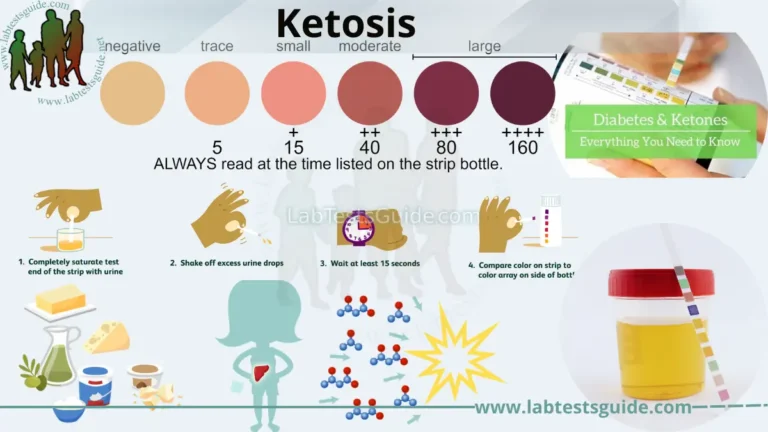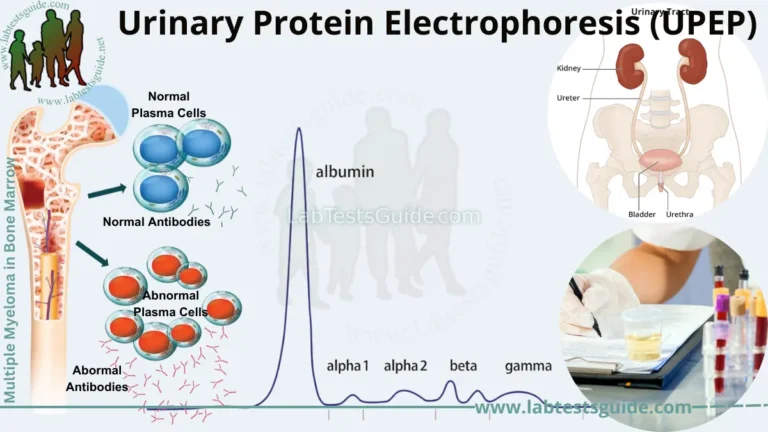Histology is the study of tissues, and pathology is the study of disease. So taken together, histopathology literally means the study of tissues as relates to disease.

Histopathology (or histology) involves the examination of sampled whole tissues under the microscope. Three main types of specimen are received by the pathology laboratory.
Specimens received by the pathology laboratory require tissue preparation then are treated and analysed using techniques appropriate to the type of tissue and the investigation required. For immediate diagnosis during a surgical procedure a frozen section is performed
- Larger specimens include whole organs or parts thereof, which are removed during surgical operations. Examples include a uterus after a hysterectomy, the large bowel after a colectomy or tonsils after a tonsillectomy.
- Pieces of tissue rather than whole organs are removed as biopsies, which often require smaller surgical procedures that can be performed whilst the patient is still awake but sedated. Biopsies include excision biopsies, in which tissue is removed with a scalpel (e.g. a skin excision for a suspicious mole) or a core biopsy, in which a needle is inserted into a suspicious mass to remove a slither or core of tissue that can be examined under the microscope (e.g. to investigate a breast lump).
- Fluid and very small pieces of tissue (individual cells rather than groups of cells, e.g. within fluid from around the lung) can be obtained via a fine needle aspiration (FNA). This is performed using a thinner needle than that used in a core biopsy, but with a similar technique. This type of material is usually liquid rather than solid, and is submitted for cytology rather than histology
Specimens received by the pathology laboratory require initial tissue preparation, then are treated and analysed using techniques appropriate to the type of tissue and the investigation required.
For immediate diagnosis during a surgical procedure, which may influence the type of surgery being performed, a frozen section is done.
Materials:
- Fixation:
- Fixative solution (usually commercially available formalin).
- Phosphate buffer (pH = 6.8).
- Rubber or gloves (see Note 1).
- Protective clothing.
- Eyeglasses and mask.
- Fume hood.
- Containers with appropriate lids (volume is commensurate
with sample size. Large neck plastic containers are preferable
and can be reused). - Labels and permanent ink
- Trimming:
- Fume hood.
- Rubber or gloves
- Protective clothing.
- Eyeglasses and mask.
- Dissecting board (plastic boards are preferred as they can be easily cleaned and autoclaved).
- Blunt ended forceps (serrated forceps may damage small animal tissues).
- Scalpels blades and handle.
- Plastic bags and paper towels.
- Containers for histological specimens, cassettes and permanent abels. Containers and cassettes, should be correctly labeled before starting tissue trimming.
- Pre-embedding
- Disposable plastic cassettes for histology (with appropriate
- lids). For small samples, disposable plastic cassettes for histology with subdivision (Microsette®).
- Foam pads (31 × 25 × 3 mm) can be used to immobilize tissue
samples inside the cassettes. - Commercial absolute ethyl alcohol and 96% ethanol solution.
- 90% and 70% ethanol solutions.
- Paraffin solvent/clearing agent: xylene or substitute (e.g.,
Histosol®, Neoclear®). - Paraffin wax for histology, melting point 56–57°C (e.g.,
Paraplast® Tissue Embedding Media). - Automated Tissue Processor (vacuum or carousel type).
- Embedding
- Tissue embedding station (a machine that integrates melted paraffin dispensers, heated and cooled plates).
- Paraffin wax for histology, melting point 56–57°C (e.g. Paraplast® Tissue Embedding Media).
- Histology stainless steel embedding molds. These are available in different sizes (10 × 10 × 5 mm; 15 × 15 × 5 mm; 24 × 24 × 5 mm; 24 × 30 × 5 mm, etc.).
- Small forceps.
- Sectioning:
- Rotary microtome.
- Tissue water bath with a thermometer. Alternatively a thermostatic warm plate can be used.
- Disposable microtome blades (for routine paraffin sections use wedge-shaped blades).
- Sharps container to discard used blades.
- Fine paint brushes to remove paraffin debris.
- Forceps to handle the ribbons of paraffin sections.
- Clean standard 75 × 25 mm microscope glass slides (other dimension microscope glass slides are commercially available).
- Laboratory oven (set at 37°C).
- Coated glass slides (e.g., Superfrost® or Superfrost Plus®). This is especially recommended when slides are used for immunohistochemistry.
- 0.1% gelatin in water (1 g of gelatin in 1 L of distillated water). This should not be used with Superfrost® or Superfrost Plus® slides and should be reserved for immunohistology sections
- Staining and Cover Slipping:
- Harris hematoxylin (commercial solution, ready to use).
- Eosin Y solution.
- Hydrochloric acid 37%.
- Absolute ethanol.
- Ethanol 96%.
- Clearing agent (xylene or substitute e.g. Histosol®, Neoclear®).
- Staining dishes and Coplin jars suitable for staining.
- Permanent mounting medium (e.g. Eukitt®).
- Glass cover slips (25 × 60 mm).
- Filter paper.
- Ethanol solutions:
- Add 12.5 mL of water to 1 L of commercial 96% ethanol to obtain 95% ethanol.
- Add 408 mL of water to 1 L of commercial 96% ethanol to obtain 70% ethanol.
- Storage of Paraffin Blocks and Slides:
- Paraffin blocks storage cabinets.
- Histological slides storage cabinets.
Components of a Histopathology Report
Histopathology reports on surgical cancer specimens are getting more and more complex. They may include:
- The microscopic appearance of the involved tissue
- Special stains
- Molecular techniques
- Other tests
Molecular Descriptions
In addition to the histopathology, other techniques may be used to assess the presence of cancer in the tissues, including fine needle aspiration cytology, and some of these techniques may be used more extensively in health care settings around the world.4
Leukemias and lymphomas are diagnosed using a combination of their appearance:
- Cytochemistry: enzymes that can enable certain chemical reactions to occur
- Immunophenotype: markers or surface proteins that can be detected using antibody tests
- Karyotype: chromosomal changes
- Morphology: how the cells look
Specimen Handling
Specimen Handling For Routine Submissions:
- Totally immerse immediately each specimen in a tightly secured container with 10% neutral buffered formalin
- Use a separate container for each specimen
- Do not crush the specimen with forceps, hemostats, or other instruments. Cautery will cause heat artifact.
- DO NOT FREEZE the specimens
- Do not force a large specimen into a small container. Formalin volume to specimen ratio should be 10:1
- Label each container (not the lid) with patient’s name and source of specimen
- Complete a Histopathology test requisition and send with specimen(s). Only one Histopathology test requisition is needed per patient
- Each container and specimen must be separately identified on the test requisition
- The test requisition should contain patient’s date of birth, sex, clinical information and anatomic source of tissue
Specimen Handling For Immunohistochemistry (IHC):
- Submit formalin fixed paraffin embedded blocks/4m sections on coated glass slides. Preferably submit one routinely stained H & E section of the block with appropriate clinical history and copy of Histopathology report
- Alternatively submit specimens as for Routine Histopathology
- Unstained FNA smears are also acceptable. Submit 2 smears for each marker requested
Specimen Handling For Direct Immunofluorescence (DIF):
- Submit minimum 3 mm punch biopsy of Skin or Conjunctival specimen in Phosphate buffered normal saline OR Michel’s fluid available from LPL
- Submit a linear 1 cm tissue core of Kidney biopsy for DIF in buffered normal saline or Michel’s fluid.
- Ship refrigerated.
- Immunofluoresence cannot be performed on formalin fixed tissues
- Attach relevant clinical history
Specimen Handling For Special Stains:
- Source and specific site (left, right, quadrant, etc.)
- Nature of lesion (solid/cystic, mobile/fixed, functional/nonfunctional, etc.)
- Any other pertinent history (previous surgery, presence of other masses, previous abnormal findings)
- Mammographic, X-ray or other radiologic findings
Specimen Collection, Non-Gynecologic
- Submit specimens as for Routine Histopathology or submit formalin fixed paraffin blocks. Attach Histopathology report, relevant clinical history and one Histology section of the block submitted
Specimen Handling For DNA Ploidy and S Phase:
- DNA Histograms are performed by Flow Cytometry on Paraffin embedded tissues or tissues submitted as for Routine Histopathology
- Submit copy of the Histopathology report with relevant clinical details
Realted Posts
Keywords: histopathology procedure pdf ,histopathology procedure ppt ,histopathology procedure manual ,histopathology staining procedure ,fish histopathology procedure ,histopathology lab procedures ,histopathology complete procedure ,histopathology slide preparation procedure ,histopathology lab procedure ,histopathology policy and procedure ,procedure for histopathology ,procedure in histopathology ,histopathology laboratory procedure ,procedure of histopathology ,histopathology tissue processing procedure ,routine histopathology procedure ,histopathology staining procedure pdf ,histopathology test procedure
Possible References Used





